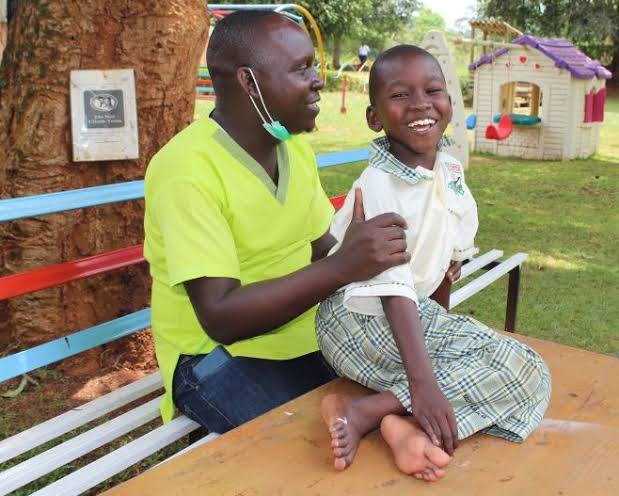Cerebral palsy (CP) is a group of neurological disorders that affect movement, muscle tone, and motor skills. It is caused by abnormal brain development or damage to the developing brain, often before birth, during birth, or shortly after. CP is the most common motor disability in childhood, affecting millions of people worldwide.

In this article, we’ll explore the causes, symptoms, and how individuals with cerebral palsy can lead fulfilling lives through support and adaptive strategies.
What is Cerebral Palsy?
Cerebral palsy is a non-progressive condition, meaning that the brain damage does not worsen over time. However, the symptoms and associated challenges can change as a person grows and develops. It primarily affects body movement, muscle control, coordination, posture, and balance.
- Spastic Cerebral Palsy: The most common form, causing stiffness and difficulty in movement due to increased muscle tone.
- Dyskinetic Cerebral Palsy: Characterized by uncontrolled, involuntary movements, often affecting the hands, arms, feet, and face.
- Ataxic Cerebral Palsy: This type affects balance and coordination, making tasks like walking or picking up objects challenging.
- Mixed Cerebral Palsy: A combination of symptoms from different types of CP.
Causes of Cerebral Palsy
CP is caused by damage to the brain’s motor control centers. This damage can occur in different ways, including:

- Prenatal factors: Infections during pregnancy, poor oxygen supply to the brain, premature birth, or low birth weight can increase the risk of cerebral palsy.
- Birth complications: Difficult labor and delivery, lack of oxygen during birth, or other birth-related issues can contribute to CP.
- Postnatal causes: Infections like meningitis, traumatic brain injury, or severe jaundice after birth can lead to cerebral palsy in some cases.
Symptoms of Cerebral Palsy
The symptoms of CP vary widely between individuals and depend on the extent and location of brain damage. Common signs and symptoms may include:
- Motor skill delays: Delays in reaching milestones like sitting, crawling, or walking.
- Muscle tone issues: Muscles may be too stiff (hypertonia) or too floppy (hypotonia).
- Abnormal reflexes: Exaggerated reflexes, such as spasticity or jerky movements.
- Coordination difficulties: Struggles with balance and fine motor skills, making everyday tasks like dressing or feeding challenging.
- Speech and swallowing difficulties: Communication problems and difficulty with chewing or swallowing can occur in some individuals.
- Seizures and intellectual disabilities: Some individuals with CP may experience seizures, learning disabilities, or sensory impairments like vision or hearing loss.
Diagnosis and Early Intervention
Diagnosing cerebral palsy typically involves assessing a child’s developmental milestones, motor function, and medical history. Doctors may use imaging tests, such as MRI or CT scans, to detect abnormalities in brain development.
Early intervention is crucial in helping children with CP develop to their full potential. This may include:
- Physical therapy: Strengthening muscles and improving coordination and mobility.
- Occupational therapy: Helping with daily activities and improving fine motor skills.
- Speech therapy: Enhancing communication skills and addressing swallowing issues.
- Medications: Managing symptoms like muscle spasticity or seizures.
Living with Cerebral Palsy: Support and Adaptive Strategies
While there is no cure for cerebral palsy, people with CP can live rich, fulfilling lives with the right support and accommodations. Each person’s experience is unique, but some common ways to manage CP include:

- Assistive devices: Wheelchairs, walkers, or other mobility aids can help individuals move more freely.
- Adaptive technologies: Communication devices, computer adaptations, and special seating can improve independence.
- Support networks: Connecting with others in the CP community, joining support groups, and seeking guidance from professionals can make a significant difference.
- Educational accommodations: Customized learning plans and classroom adjustments ensure children with CP receive the education they need.
Raising Awareness and Promoting Inclusion
Raising awareness about cerebral palsy is essential for creating an inclusive society where individuals with CP can thrive. Public understanding and accessibility improvements can break down barriers and ensure everyone has the opportunity to participate fully in all aspects of life.
Conclusion
Cerebral palsy presents unique challenges, but with early intervention, therapy, and supportive strategies, individuals with CP can lead empowered, meaningful lives. As society continues to grow more inclusive, it’s important to educate ourselves, provide support, and advocate for the rights of those living with CP. By doing so, we can ensure that everyone, regardless of ability, has the opportunity to achieve their full potential.




